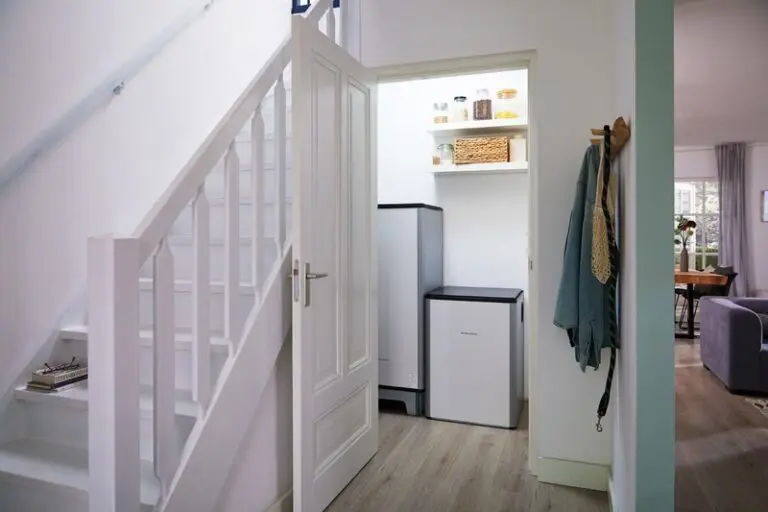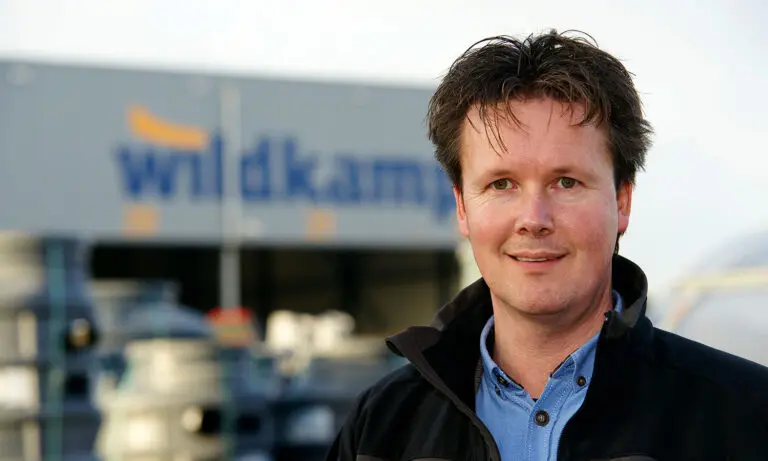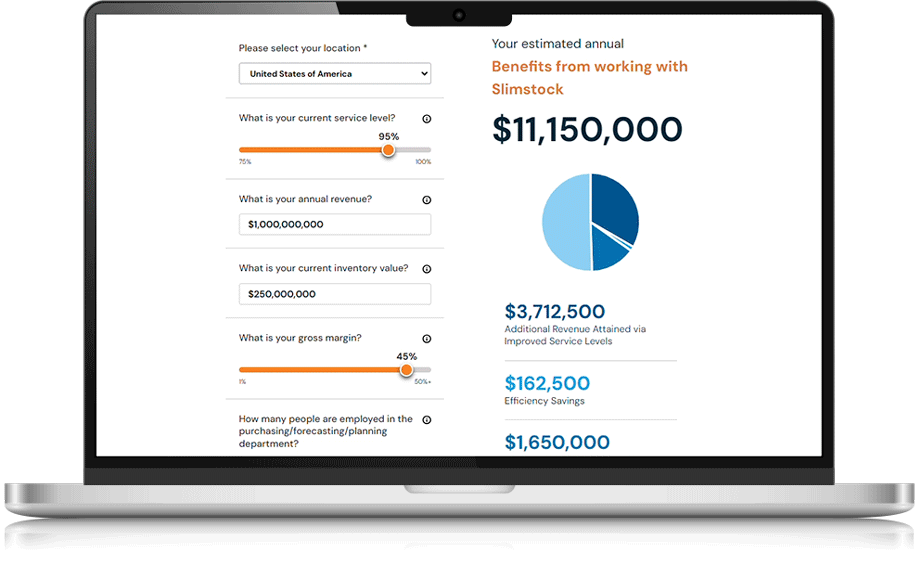Since its founding in 1929, Van Marcke, a wholesaler in sanitary and heating equipment, has grown to become a leader in its sector. Along with this growth came a steady increase in inventory. To maintain control of stock in both the distribution centre (DC) and retail stores, Van Marcke relies on Slimstock’s Slim4 inventory management software.
We spoke with Torrino Debal, Head of Stock Management at Van Marcke, to learn how the software has become integrated into their inventory management during the most recent Supply Chain Innovations event.
As a specialised wholesaler, Van Marcke distributes sanitary equipment, heating systems, ventilation and cooling solutions, and installation materials, with a strong focus on renewable energy-based solutions. The family business is a leading player in Belgium and Luxembourg, and also operates commercially in France, the Netherlands, Switzerland, Malta, and the US. In total, Van Marcke has 92 technical sales points and 18 showrooms, employing around 1,400 people.
“Van Marcke’s mission is to make a house a home,” begins Torrino Debal. “On one hand, we achieve this by delivering high-quality products, and on the other, by offering value-added services. For example, we provide our installers with training, in collaboration with our suppliers.” In line with this philosophy, Van Marcke has developed several specific services.
Installers can approach Van Marcke Solutions for advice on new technologies, while Van Marcke Contracting Service focuses on large-scale projects with personalised follow-up. Van Marcke Engineering is its own engineering bureau, and Van Marcke Installs is a platform connecting end customers and installers, where Van Marcke generates quotes for equipment, and the installer is responsible for installation. “This way, installers can focus entirely on their job without the hassle of administrative work.”
Behind Van Marcke’s mission is a smart and efficient logistics system. To support its logistics activities, the company relies on two distribution centres. The DC in Luxembourg houses 4,000 SKUs (stock-keeping units), while the Belgian warehouse stores a total of 21,000 SKUs. Torrino Debal explains: “Five years ago, we built a state-of-the-art 80,000 square metre DC in Kortrijk, with a fully automated ‘man-to-goods’ installation. This warehouse receives 5,000 pallets of goods weekly. With features like 14,000 solar panels on the roof, geothermal heating, and on-site water purification, the warehouse is fully energy-independent. The operational efficiency in this facility supports our ‘first-time-right’ principle. We also have our own transport company, ensuring we provide the service, flexibility, and peace of mind that we promise.”
Slim4 for a Unified Multi-Location Environment
Aligned with the ‘first-time-right’ philosophy, it is crucial for Van Marcke to have the right product in the right place. Torrino Debal explains: “To help us balance inventory, operational costs, and customer service, we implemented Slim4 software from Slimstock about ten years ago. We started using it in our sales points, and then our Belgian DC adopted the system. After acquiring Luxembourg’s CFM (Comptoir des Fers et Métaux), we also implemented Slim4 in that warehouse. This resulted in three separate Slim4 environments that, despite interactions, operated independently.”
When Van Marcke went live with their new SAP ERP system in October 2023, the company decided to consolidate those three environments into a single multi-location environment. This now manages a total of 525,000 items in stock: 25,000 in the DCs and 500,000 across the retail stores.
DC Inventory Management versus Retail Stores
Daily, data is imported from SAP into Slim4, where the planner processes it, sending stock advice back to SAP. In addition to daily communications and calculations, weekly and monthly reports are also generated, such as for determining the ABC classification. At the DC level, Van Marcke differentiates the service level based on the product strategy.
“During our annual budget meetings, we agree on the product categories we want to grow in,” Torrino Debal explains. “Those products receive a higher service level. We also work with a weighted average, so more expensive products naturally receive a slightly lower service level than cheaper ones. This allows us to provide a higher service level for lower-cost products. In the retail stores, stock levels are purely determined by ABC analyses.”
Torrino Debal believes that accurate demand forecasting is the foundation of effective inventory management. “For DC inventory management, we consider historical sales, seasonal patterns, and trends. If a product is expected to sell more or less due to, say, changes in legislation, users can add relevant information to the system,” he explains.
“We also review forecast exceptions monthly. If we consistently exceed certain thresholds, the inventory planner investigates the cause. The Promotion Manager in Slim4 ensures that extra sales due to lower prices do not disrupt the ‘baseline forecast.’ We also use Transaction Outlier Detection, a machine learning tool within Slim4, to identify outliers at the transaction level, focusing on transactions that deviate significantly from monthly usage or are unusual for a specific customer.”
Retail stores also use historical sales data to build their forecasts. “However, determining the final inventory differs from DC-level forecasting. For example, in our planner, there are rules to ensure that stores always have the right stock for presentation,” continues Torrino Debal. “For cheaper items, there must always be at least three in stock. This not only ensures more efficient restocking, but a well-stocked display also looks better for customers. For determining order quantities, we use the EOQ (economic order quantity) philosophy.”
Debal adds: “To calculate EOQ, we need two criteria: our holding costs (as a percentage) and our order line costs (in euros) based on the optimal order quantity. We perform this exercise annually. We also try to order products in full boxes whenever possible, as it’s more cost-effective for receiving and storing goods at the DC and more efficient for supplying stores.”
Central Assortment Management with Local Adjustments
The ‘category manager’ at Van Marcke leads assortment management. “They have the most product knowledge,” explains Torrino Debal. “They know exactly which products we need to offer in each category, which suppliers provide them, and who offers the best terms.” The category manager is also responsible for the assortment in the stores. Each store typically has around 6,000 unique references, mostly including installation materials, tools, and smaller items like batteries and folding rules.
The assortment management is largely centralised. “This works well for most products, but sometimes there are local differences between the countries we serve,” Torrino Debal notes. “That’s why a small portion of the products is managed locally. It’s up to our branch managers to capture these local differences. They can add or remove certain products or decide to increase the maximum or minimum stock levels. However, adding items is not done lightly. Branch managers are given a specific budget to manage their inventory, and they can use this budget to add items, as long as the total value does not exceed 27.5% of the local inventory value. This way, branch managers can make local adjustments.”
Order Recommendations for DCs and Retail Stores
To review the order recommendations for the 21,000 SKUs at the Belgian DC, Van Marcke employs three inventory planners, each responsible for a different product category: heating, installation materials, and sanitary products. For the 4,000 SKUs in the Luxembourg warehouse, one planner is in charge. “Although Slim4’s order recommendations are accurate, we still review each one,” Torrino Debal explains. “Sometimes we need to add products to meet agreed-upon purchasing conditions.”
In Kortrijk, the planners review recommendations for approximately 400 suppliers weekly, and in Luxembourg, for 150 suppliers. “We have fixed order days with each supplier. For example, we order from supplier x every Monday to receive delivery by Wednesday. But, of course, we also operate on ‘management by exception,’ so if an item is at risk of running out of stock, inventory planners can take action.”
The process for deliveries to the stores is different. “It would be impractical to manually approve order recommendations for 500,000 items. So we’ve fully automated the process. We make separate selections based on product group and value, but in the end, the recommendations from Slim4 are processed without manual intervention. These include restocking orders from the DC, which are sent in the evening for picking the next morning, and orders directly placed with suppliers.”
To keep track of everything, Van Marcke employs one inventory planner/analyst. “This person is a real all-rounder. They ensure that no store has excess stock and that the assortment remains relevant. They also need to keep in mind that any action they take will apply across all stores.”
Collaborative Effort
However, it’s not just an efficient internal organisation and the right supporting software that are crucial for balanced inventory management. Strong collaboration with suppliers is also key. “The better the collaboration, the better we are served,” says Torrino Debal. “That’s why we regularly hold Teams meetings with most of our suppliers for a quick status update, to identify any issues,” he explains.
“We share our ‘purchase forecast’ with suppliers. Sometimes this is contractually agreed, and we even receive a bonus for sharing it. One of our private label suppliers relies on our forecast for their staff planning. We also notice that the OTIF (On-Time In-Full) rate is higher with suppliers we share data with. We even share sales data with some suppliers to forecast better.”
The collaboration with suppliers of private labels goes even further. “We essentially try to be in the driver’s seat, from product design to packaging optimisation. Effective communication with the supplier is vital for such collaborations to run smoothly.”
Lastly, Torrino Debal highlights the importance of a good relationship with software providers. “For us, Slimstock is not just a supplier, but a partner with expertise we can always rely on. Open communication is essential to us. When we transitioned to SAP, Slimstock helped consolidate three parallel environments into one multi-location system, so now everyone can work from the same environment. It’s crucial to be able to discuss challenges openly.”






